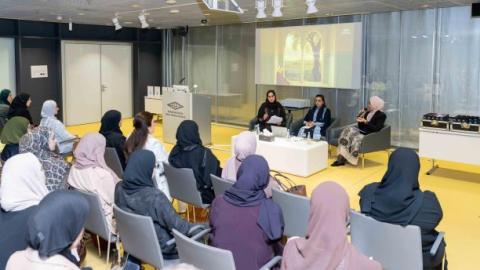
The Gulf region is one of the world’s oldest crossroads of global trade and cross-cultural exchange. Geographically, it is a natural maritime highway between the Middle East and South Asia, and beyond. Historically, trade and communication between the Gulf and South Asia was slow, subject to the monsoon winds in the days of sail.
Today, of course, communication between the Gulf and the rest of the world is instant, measured in seconds instead of months. Most people would assume that the instant communication revolution in the Gulf happened in the mid-20th century with the introduction of telephones, but it actually began a hundred years before, with the Gulf’s first electric telegraph. Now, thanks to the painstaking work of archivists and historians working on the Qatar Digital Library (QDL), new light is being shed on this little-understood episode in Gulf history.
Long-distance communication through various forms of telegraphy (beacons, drums, flags) has been practiced for over 2,000 years, but it was not until the start of the Victorian Era, in 1837, that the first commercial electric telegraph appeared, in Britain. Refinements to the system continued until, by the 1850s, its value was well-established. Then, in the 1860s, Britain sought to build a commercial telegraph line all the way to its most important colony, British India. As a result, the Gulf became one of the most important communication corridors of the British Empire.
A series of historical documents held by the British Library and now available on the QDL reveal how the proposal to extend Britain’s telegraph line through the Gulf was first made in May 1860. That month, John Wortley de la More, an entrepreneur in the telegraph industry, outlined his plans to extend the existing lines further through Persia and the Gulf by establishing a link first from Baghdad to Basra, and then from Basra to Karachi, British India’s westernmost port (in modern-day Pakistan).
The ambitious plan was outlined in a letter to British India’s Political Resident in the Gulf, Sir Lewis Pelly. Another 61 records document the plan’s implementation between 1862 and 1864, carried out by cable ships, which laid a 2,000-kilometer underwater telegraph cable from Basra to Karachi. One of these records gives details of Pelly’s negotiations with the Sultan of Muscat, Thuwaynī bin Saʻīd Āl Bū Saʻīd, which resulted in a fascinating handwritten Agreement in Arabic and English, signed in November 1864, permitting the telegraph cable to be laid through the Ras Musandam Peninsula and potentially Bandar Abbas (the latter being leased to the Sultan at the time by the Shah of Persia).
In November 1869, a cable ship arrived in the Gulf to begin laying a telegraph cable from Jask in eastern Persia to Bombay in India. In an undated letter on the QDL, Pelly reported on the construction of a large telegraph station at Jask. A photograph of this impressive-looking station, dating from around 1870, can be seen elsewhere on the QDL.
While there were some setbacks, the new telegraph line through the Gulf was a huge success. It enabled people in Britain and British India to communicate with each other in days instead of months, while people in the Gulf were able to communicate with India within hours instead of weeks. Since the telegraph was commercial, merchants could use it as well, helping to greatly expand trade between the Gulf and India. Dr. James Onley, Director of Historical Research and Partnerships at Qatar National Library, says: “Users of the QDL will be amazed at the wealth of material available from the British Library, which houses the world’s single most important archival collection on the Gulf region. A search for ‘telegraph’ on the QDL will produce over 51,000 hits across 4,562 records. If we narrow our results down to the 1860s, we get 378 hits across 134 documents. If we focus on just 1862, we get 101 hits across 35 records. The QDL, just like the telegraph itself, saves its users time: taking just minutes what would have taken months. Indeed, the QDL can be viewed as part of the same communications revolution started by the telegraph 160 years ago. Where the telegraph once connected people in the Gulf with Britain and India, now the QDL connects people everywhere with historical records on the Gulf in Britain and, eventually, India as well.”
Dr. Onley added: “The QDL is changing the way scholars and students research the history of the Gulf region. It has become their first port of call, enabling them to find in seconds what used to take them weeks, months or even years. It is making the past more accessible than ever, leading to a sharp increase in the number of exciting new historical studies on the Gulf—the least-studied region in the Middle East.”
Learn more about this topic on the QDL by visiting: https://www.qdl.qa/en/telegraphy-gulf%E2%80%99s-most-admired-means-communication-1860s







